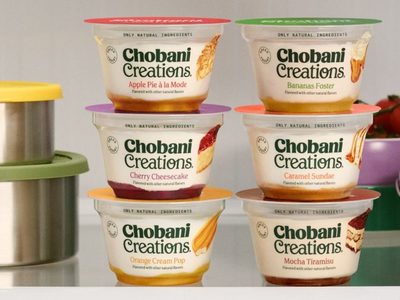Simple ingredient combinations
The craft processing of beverages increasingly includes a story about the ingredients. It might be where or how they are sourced, have it be locally or fairly traded from half way around the world. Functional — but simple, and easy-to-understand — ingredients will continue to become more mainstream. Use of organic ingredients also is continuing to trend.
“Organic as a sustainable agriculture model will attract further interest in 2017, as the demand for organic produce is outgripping supply in many markets, showing both a challenge and opportunity for certifiers and players on the value chain,” said Hope Lee, senior beverages analyst, Euromonitor International, Chicago.
 |
| Maria Mascaraque, health and wellness analyst at Euromonitor |
Maria Mascaraque, health and wellness analyst at Euromonitor, added, “The health and wellness industry will continue to grow in 2017. Fortified and functional products are still going strong, but there is an even more increasing movement toward naturally healthy offerings, such as vegetable beverages.”
For example, Lake Success, N.Y.-based BluePrint, a brand of The Hain Celestial Group Inc., now combines organic cold-pressed juices with the power of fermented tea, to offer beverages with a range of functional benefits. BluePrint’s Kombucha Miss Tang uses lime, lemon and ginger juice to help boost immunity, while Sweet Heat blends ginger, apple and lemon juices with a cayenne pepper kick to help reset and re-energize.
“When small-batch brewed kombucha is blended with our crafted organic cold-pressed juice, we think it truly is ‘magic in a bottle,’” said Alex Galindez, general manager at BluePrint.
The Campbell Soup Co., Camden, N.J., continues to invest in its Bolthouse Farms brand. The 1915 juice line, a nod to Bolthouse’s founding year, now includes cold-pressed juice blends with coconut water as well as plant proteins, including almond, pea and soy.
Increased innovation in plant protein beverages is on track for noteworthy growth this coming year. This is the result of consumers trying to increase protein intake, while at the same time heeding the recurring nutritional message to consume more plant-based foods. Consumers also are being told that plant-based proteins are a more sustainable alternative to animal protein, requiring fewer natural resources — land, water and fossil fuels — for production, and helping to ensure a lower impact on the environment. This makes a compelling story.
Some of the least likely consumer packaged goods companies want part of the action. Burt’s Bees, Durham, N.C., the personal care company that has crafted natural skin solutions for more than 30 years, is now helping nourish the body from the inside out with Burt’s Bees Plant-Based Protein Shakes.
The powdered mix line includes three formulations. Daily Protein, Protein + Gut Health with probiotics, and Protein + Healthy Radiance with antioxidant vitamins A, C and E. All formulas provide 15 grams of protein per serving from five sources —flaxseed, oat, pea, rice and sunflower seed and oat — all selected to achieve high digestibility and a complete essential amino acid profile. The new protein shakes also feature vitamins extracted from real fruits and vegetables, such as spinach, shiitake mushroom and strawberry. The line is non-G.M.O., gluten-free, soy-free, dairy-free and made without artificial sweeteners or flavors. The shake mix is sweetened with honey, monk fruit extract and stevia leaf extract.
These new mixes are flavored to be chocolate or vanilla, but many plant-based functional beverages are being designed to assume the flavor of the ingredients in the formula, rather than being “flavored” into the popular berry, chocolate and vanilla flavors. With that said, beverages designed with familiar flavors increasingly are carrying an herb or spice accent to stand out in the beverage case. This might be a touch of rose in a mixed berry carbonated water or cardamom in a tropical yogurt smoothie.
Herbs and spices are expected to be some of the most popular beverage flavors in 2017, said David Dafoe, founder of Louisville, Ky.-based Flavorman, a custom beverage development company.
“The flavor forecast for 2017 is shaping up to be all about seeking healthy and clean, oldies but goodies and will also explore a bit of the exotic,” Mr. Dafoe said. “Turmeric, the herb and kitchen staple known for both its distinctive flavor that is mildly aromatic with a sense of orange and ginger and health benefits, is the top trending beverage flavor.”
Turmeric’s purported health benefits range from reducing cholesterol to controlling diabetes. It is loaded with antioxidants and anti-inflammatory properties. To date, the most common applications have been tea and root vegetable smoothies, such as a blend of beet, carrot and turmeric. However, the future looks bright for turmeric in craft sodas, drinkable yogurts and even simply drinkable turmeric.
Coconut continues to be incorporated into all types of beverages, providing flavor, sweetness and nutrition. No wonder Mr. Dafoe identified coconut as a trending beverage flavor for 2017.
“Coconut is known for its distinct tropical flavor,” he said. “This exquisite flavor has a subtle sweetness with undertones of butterscotch and caramel. It provides a nutritious source of nutmeat, juice, milk and oil and is known for its healing properties.
“Spicy flavors are turning products up a notch. Hot and spicy flavors have risen in popularity in beverages over recent years due in part to the ongoing interest and exploration of ethnic cuisines across the U.S. Major distillers are creating specific line extensions to add spice to their already existing products, such as spicy versions of rum, bourbon and whiskey.”
What would a beverage trends article be without a mention of sweeteners? The fact is, sweet tastes good. Thus, eliminating sweet may not make sense; however, incorporating technologies that assist with delivering sweet with fewer sugar calories does. This includes formulating with alternative sweeteners, blending sweeteners, using sweet flavors and incorporating fruit and vegetable ingredients. As pointed out, process helps, too.








